 Animalphotography - Wolf
Animalphotography - Wolf
My German friend @v-siniarski is an outstanding photographer and writer!
I imagined a lot while reading his article Animalphotography - Wolf!
I hope he understands first that East Asians like me find it difficult to distinguish German and French fairy tales.😅
I felt that Beauty and the Beast was the coolest of all French fairy tales!
The wonderful videos and songs of Beauty and the Beast, which were made into an animated film by Walt Disney in 1991, still remain in my wonderful memories.
East Asians like me tend to have a longing for French culture and a sense of mystery!
French sounds beautiful and mysterious to me!
So, So, East Asian men like me often tend to imagine that French women are the most beautiful and cutest in Europe.😄
**Pinocchio - Danièle Vidal **
So, the song Pinocchio - by French female singer Danièle Vidal - became very popular in Japan and Korea in the 90s.
French women's songs give the pleasure of whispering sweet and playful feelings of love into the ears of East Asian men!
I wondered if my friend @v-siniarski would remember the saying that French men steal the souls of German women.😉
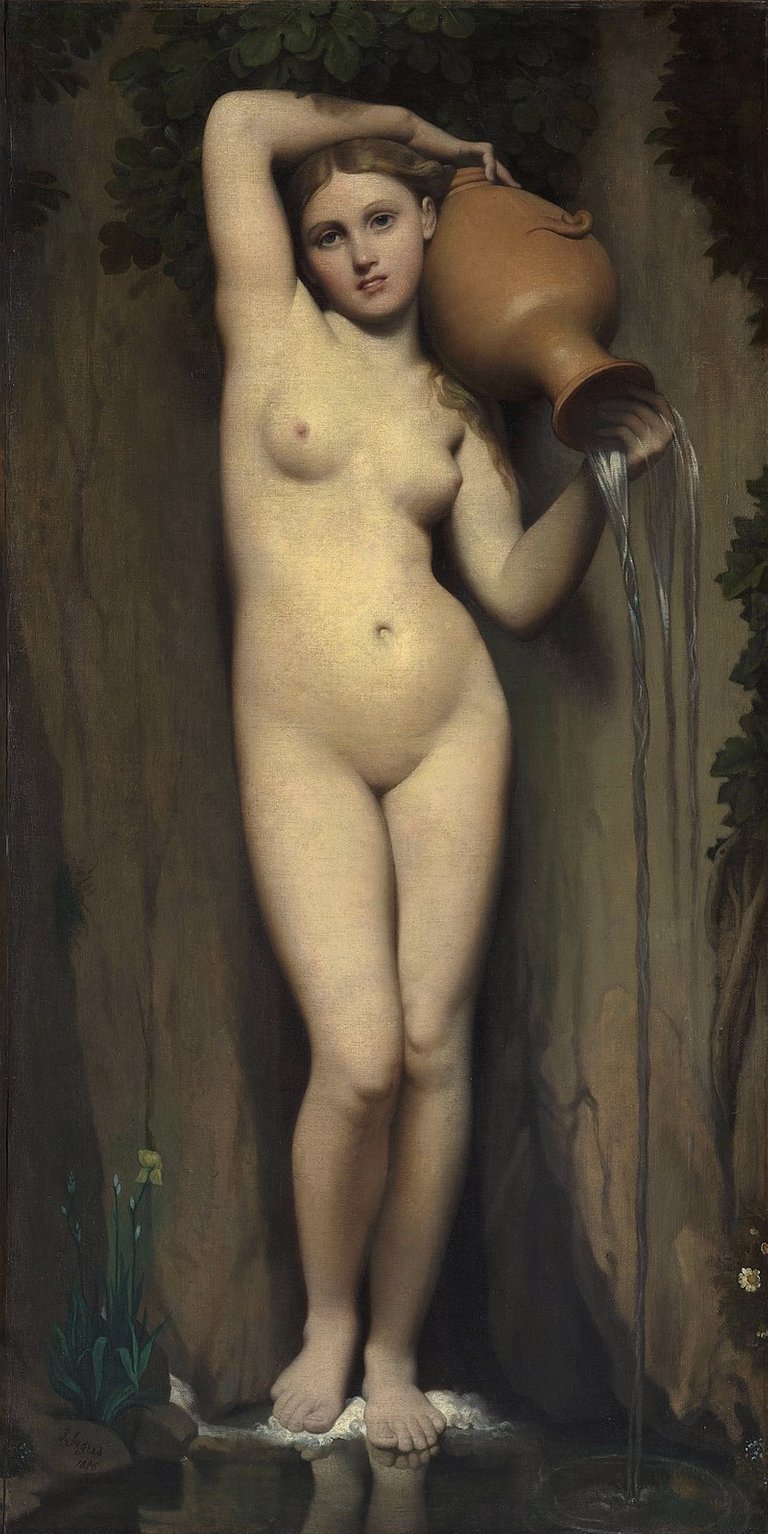 Jean-Auguste-Dominique Ingres (/ˈæŋɡrə, ˈæ̃ɡrə/ ANG-grə, French: [ʒɑ̃ oɡyst dɔminik ɛ̃ɡʁ]; 29 August 1780 – 14 January 1867)
Jean-Auguste-Dominique Ingres (/ˈæŋɡrə, ˈæ̃ɡrə/ ANG-grə, French: [ʒɑ̃ oɡyst dɔminik ɛ̃ɡʁ]; 29 August 1780 – 14 January 1867)
Jean Auguste Dominique Ingres La Source
Jean Auguste Dominique Ingres' the Source (La Source) is a representative masterpiece that arouses the longing for French culture in East Asian men.
The sensuality of French nymphs in France's warm and rich natural environment catches the eyes of East Asian men.😳
It was the elegant sensuality of French women that cannot be found in East Asian women.😍
 The holy grail may be located in the French Vineyards of Northern France.
The holy grail may be located in the French Vineyards of Northern France.
I used to imagine France to be a country of warm and fertile grapes. I imagined sensual French women picking grapes!
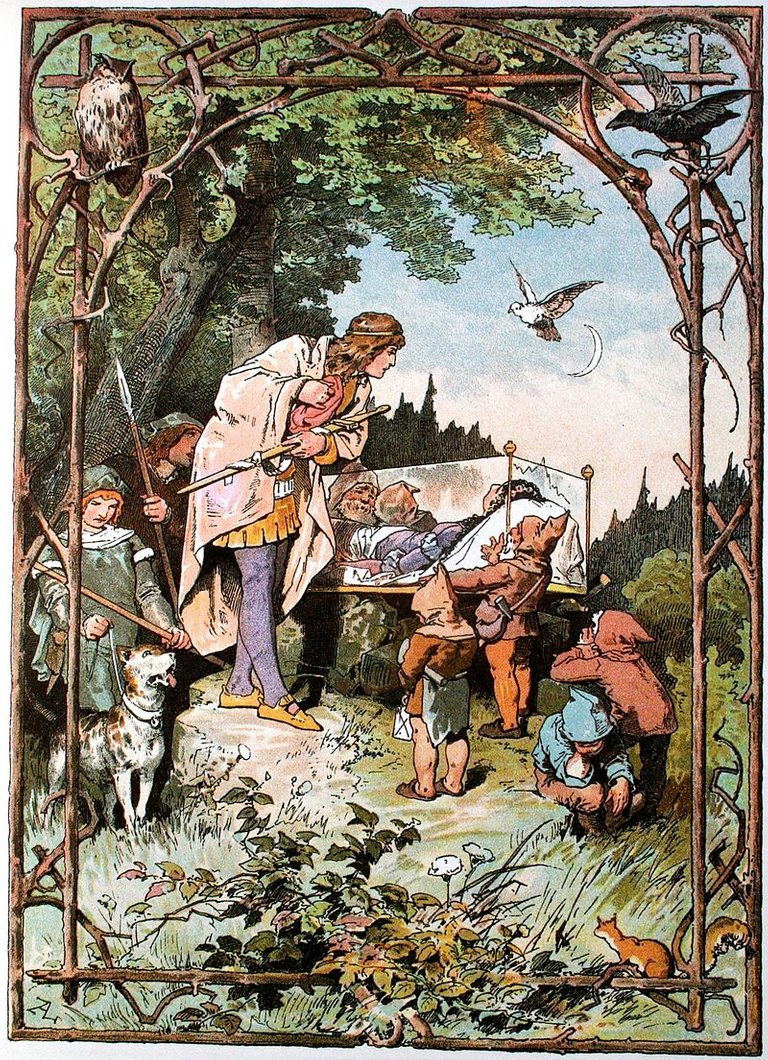 Snow White
Snow White
"Snow White", also known as "Keeper of the Dwarfs," is a 19th-century German fairy tale that is today known widely across the Western world. The Brothers Grimm published it in 1812 in the first edition of their collection Grimms' Fairy Tales and numbered as Tale 53. The original German title was Sneewittchen, a Low German form, but the first version gave the High German translation Schneeweißchen, and the tale has become known in German by the mixed form Schneewittchen. The Grimms completed their final revision of the story in 1854.[1][2]
The fairy tale features such elements as the magic mirror, the poisoned apple, the glass coffin, and the characters of the Evil Queen and the Seven Dwarfs. The seven dwarfs were first given individual names in the 1912 Broadway play Snow White and the Seven Dwarfs and then given different names in Walt Disney's 1937 film Snow White and the Seven Dwarfs. The Grimm story, which is commonly referred to as "Snow White",[3] should not be confused with the story of "Snow-White and Rose-Red" (in German "Schneeweißchen und Rosenrot"), another fairy tale collected by the Brothers Grimm.
In the Aarne–Thompson folklore classification, tales of this kind are grouped together as type 709, Snow White. Others of this kind include "Bella Venezia", "Myrsina", "Nourie Hadig", "Gold-Tree and Silver-Tree",[4] "The Young Slave", and "La petite Toute-Belle".
So, what kind of fairy tale symbolizes Germany, the country next to France?
For East Asian men like me, Disney's Snow White animation is perhaps the most famous German fairy tale.😄
Walt Disney is known for his ingenious ability to twist European fairy tales for adults into works for children.😁
There are several versions of Snow White's original work, with one ending in which Snow White's mother dies a tragic death after wearing heated iron shoes.😨
Since Germany and France are neighboring countries, I felt that they shared similar myths and fairy tales.
I had a surprising idea when I saw an article my friend @v-siniarski posted pictures of German wolves.
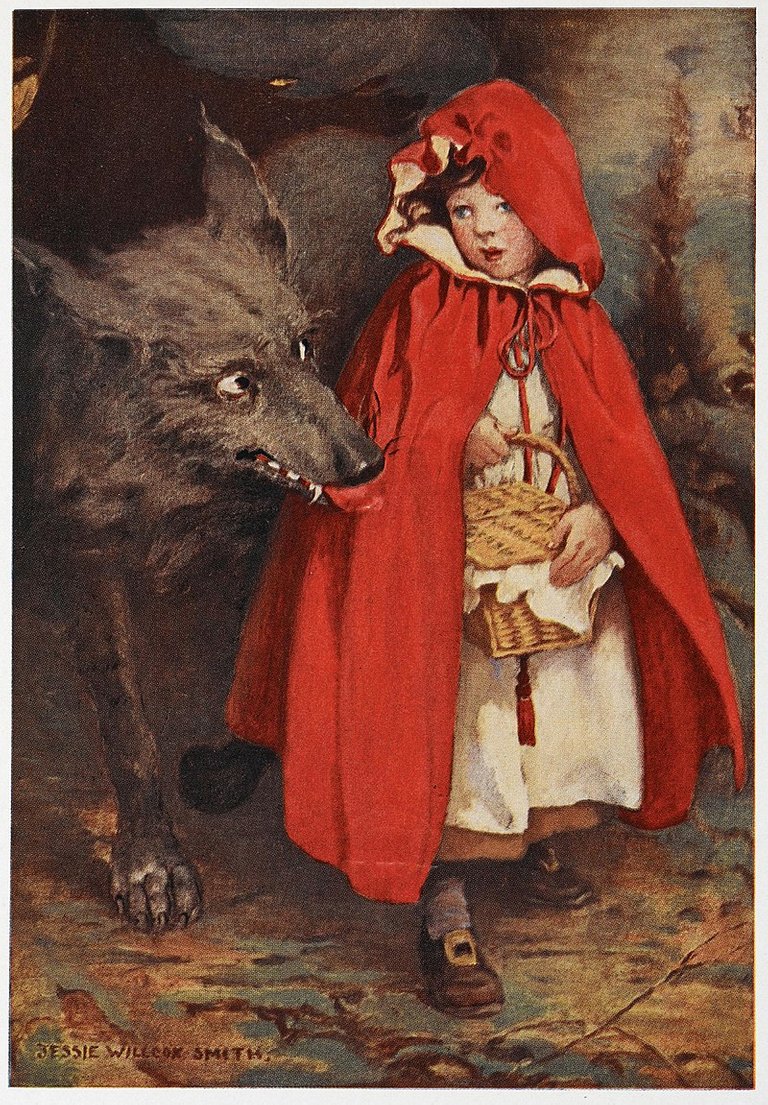 Little Red Riding Hood
Little Red Riding Hood
"Little Red Riding Hood" is a European fairy tale about a young girl and a Big Bad Wolf.[1] Its origins can be traced back to several pre-17th century European folk tales. The two best known versions were written by Charles Perrault[2] and the Brothers Grimm.
The story has been changed considerably in various retellings and subjected to numerous modern adaptations and readings. Other names for the story are: "Little Red Cap" or simply "Red Riding Hood". It is number 333 in the Aarne–Thompson classification system for folktales.[3]
Perhaps "Little Red Riding Hood" is the most representative fairy tale shared between Germany and France.
In this work, @v-siniarski's beloved wolf and a beautiful girl in a red hood are the main characters.
The earliest known printed version[26] was known as Le Petit Chaperon Rouge and may have had its origins in 17th-century French folklore. It was included in the collection Tales and Stories of the Past with Morals. Tales of Mother Goose (Histoires et contes du temps passé, avec des moralités. Contes de ma mère l'Oye), in 1697, by Charles Perrault. As the title implies, this version[27] is both more sinister and more overtly moralized than the later ones. The redness of the hood, which has been given symbolic significance in many interpretations of the tale, was a detail introduced by Perrault.
The story had as its subject an "attractive, well-bred young lady", a village girl of the country being deceived into giving a wolf she encountered the information he needed to find her grandmother's house successfully and eat the old woman while at the same time avoiding being noticed by woodcutters working in the nearby forest. Then he proceeded to lay a trap for Red Riding Hood. Little Red Riding Hood ends up being asked to climb into the bed before being eaten by the wolf, where the story ends. The wolf emerges the victor of the encounter and there is no happy ending.
Charles Perrault
Charles Perrault explained the 'moral' at the end of the tale[29] so that no doubt is left to his intended meaning:
From this story one learns that children, especially young lasses, pretty, courteous and well-bred, do very wrong to listen to strangers, And it is not an unheard thing if the Wolf is thereby provided with his dinner. I say Wolf, for all wolves are not of the same sort; there is one kind with an amenable disposition – neither noisy, nor hateful, nor angry, but tame, obliging and gentle, following the young maids in the streets, even into their homes. Alas! Who does not know that these gentle wolves are of all such creatures the most dangerous!
This, the presumed original version of the tale was written for the late seventeenth-century French court of King Louis XIV. This audience, whom the King entertained with extravagant parties, presumably would take from the story's intended meaning.
It was Charles Perrault of France who wrote "Little Red Riding Hood" in the first literary work.
He wrote a collection of fairy tales for adults for the entertainment of 17th-century French royalty and aristocrats.
So, Little Red Riding Hood ended up with an adult ending that climbs into bed with the wolf.
I believe my friend @v-siniarski will understand what I mean.😁
In the 19th century two separate German versions were retold to Jacob Grimm and his younger brother Wilhelm Grimm, known as the Brothers Grimm, the first by Jeanette Hassenpflug (1791–1860) and the second by Marie Hassenpflug (1788–1856). The brothers turned the first version to the main body of the story and the second into a sequel of it. The story as Rotkäppchen was included in the first edition of their collection Kinder- und Hausmärchen (Children's and Household Tales (1812) - KHM 26).[30][31]
The earlier parts of the tale agree so closely with Perrault's variant that it is almost certainly the source of the tale.[32] However, they modified the ending; this version had the little girl and her grandmother saved by a huntsman who was after the wolf's skin; this ending is identical to that in the tale "The Wolf and the Seven Young Kids", which appears to be the source.[33] The second part featured the girl and her grandmother trapping and killing another wolf, this time anticipating his moves based on their experience with the previous one. The girl did not leave the path when the wolf spoke to her, her grandmother locked the door to keep it out, and when the wolf lurked, the grandmother had Little Red Riding Hood put a trough under the chimney and fill it with water that sausages had been cooked in; the smell lured the wolf down, and it drowned.[34]
The Brothers further revised the story in later editions and it reached the above-mentioned final and better-known version in the 1857 edition of their work.[35] It is notably tamer than the older stories which contained darker themes.
The German Brothers Grimm, on the other hand, recreated "Little Red Riding Hood" as a children's fairy tale fit for the European Enlightenment of the 19th century.😂
They seem to want German children to grow up to be good, obedient people by reading "Little Red Riding Hood".
As I read the German and French versions of "Little Red Riding Hood", I felt that the French version was more interesting.
Charles Perrault's work was created 120 years ago than the Grimm brothers' work, so it is more likely that it is an original, unadapted work.
I believe the Little Red Riding Hood symbolizes the pagan culture before the spread of Christianity in Europe.
Since time immemorial, there have been pagan events in the world where beautiful young girls are sacrificed for good harvest and fertility.
The Bible records pagan events in which children are sacrificed to Moloch. There were also group sexual intercourse events.
In Charles Perrault's fairy tale, The act of "Little Red Riding Hood" climbing onto the bed with the wolf symbolizes the group sex of the pagan event.
So, East Asian men, mainly Japanese men, have created many adult works that reinterpret and recreate "Little Red Riding Hood".😆
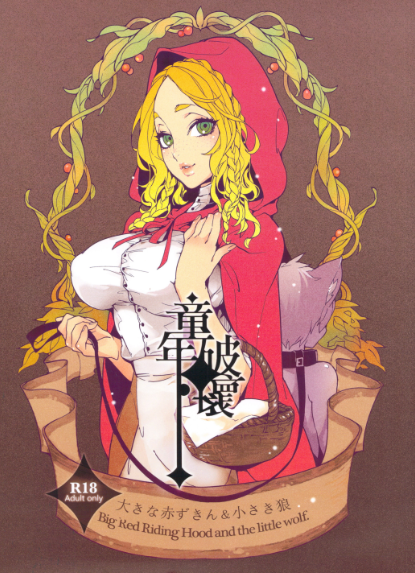
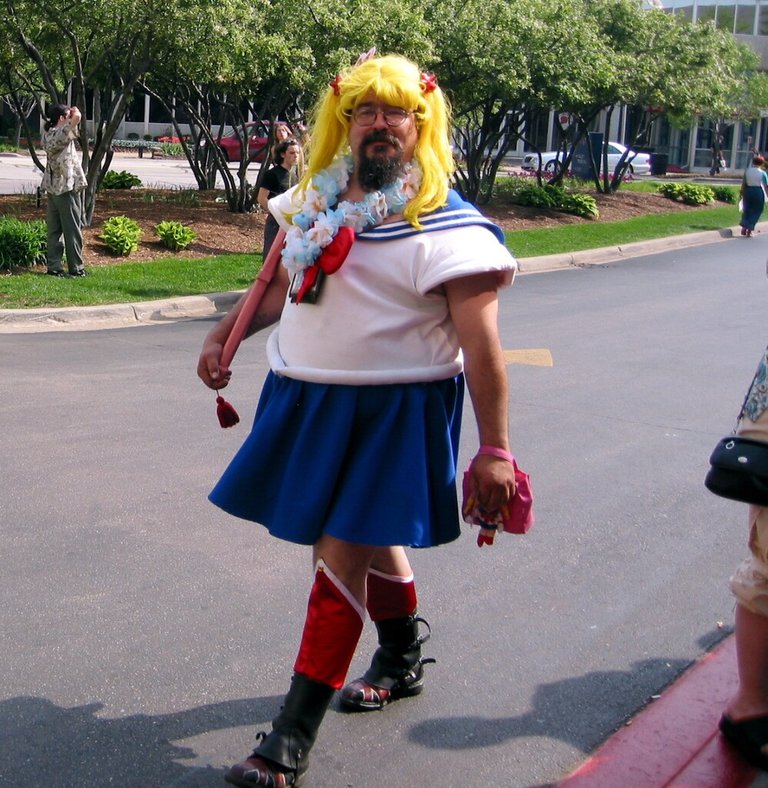

I wonder how my friend @v-siniarski appreciates the creations of my imagination.😁
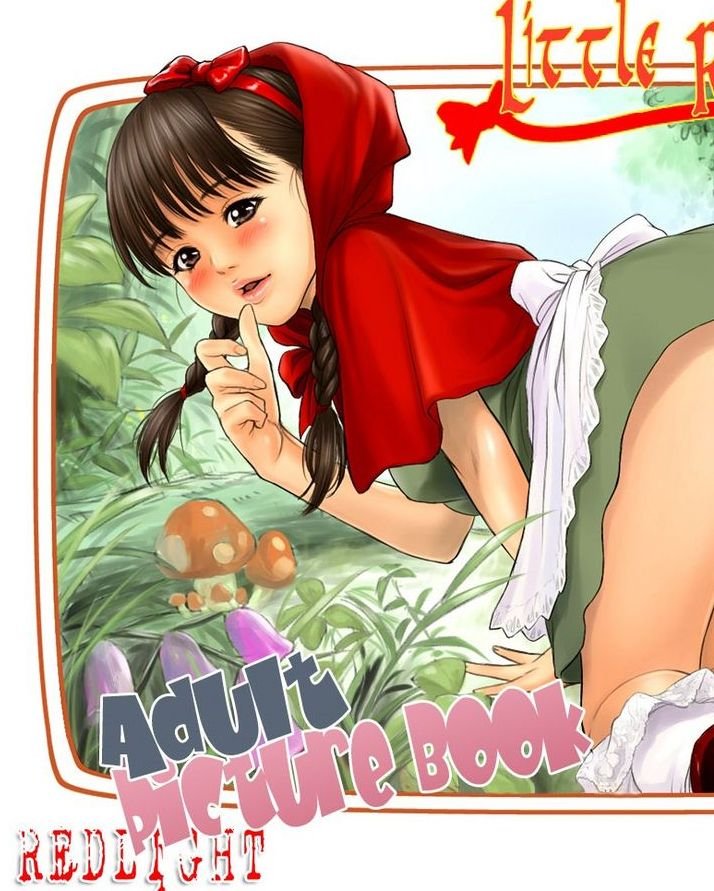

Hahaha 😃😃👍Very interesting theory and contribution. I find the difference between French fairy tales having beautiful princesses and romantic stories and German fairy tales having scary stories and heroic deeds. For example, the well-known fairy tale from Germany, Peter and the Wolf.🙈😃
Dear @v-siniarski , Thank you for your compliments!
I am very interested in European literature and art.
I hope my awkward English work doesn't cause you any misunderstanding and discomfort.
I hope you will correct my misunderstandings and misimformations about European culture in the future.
Wow, That is good idea! I think you're right!
Ahahaha, Wolves seem to always be the main characters in German legends.😄
Yes, because in the Middle Ages, wolves were evil symbols as demons or evil predators, etc. 😈🙈😃😃